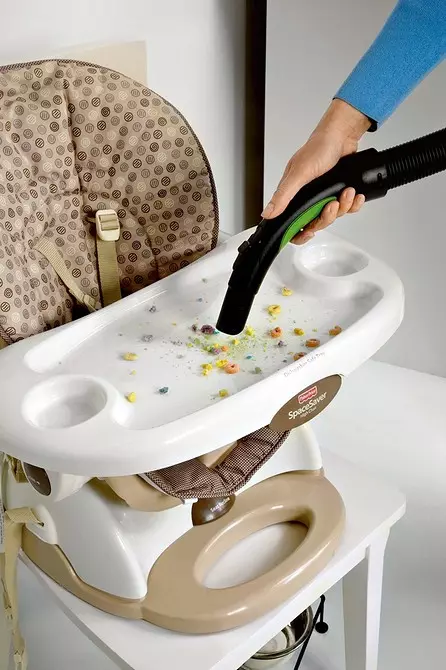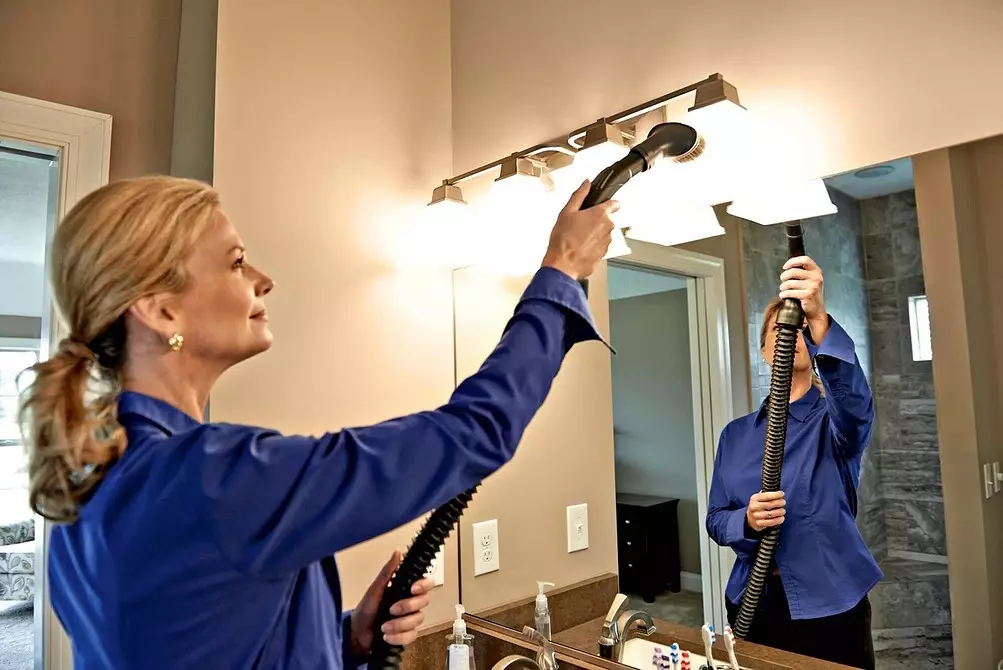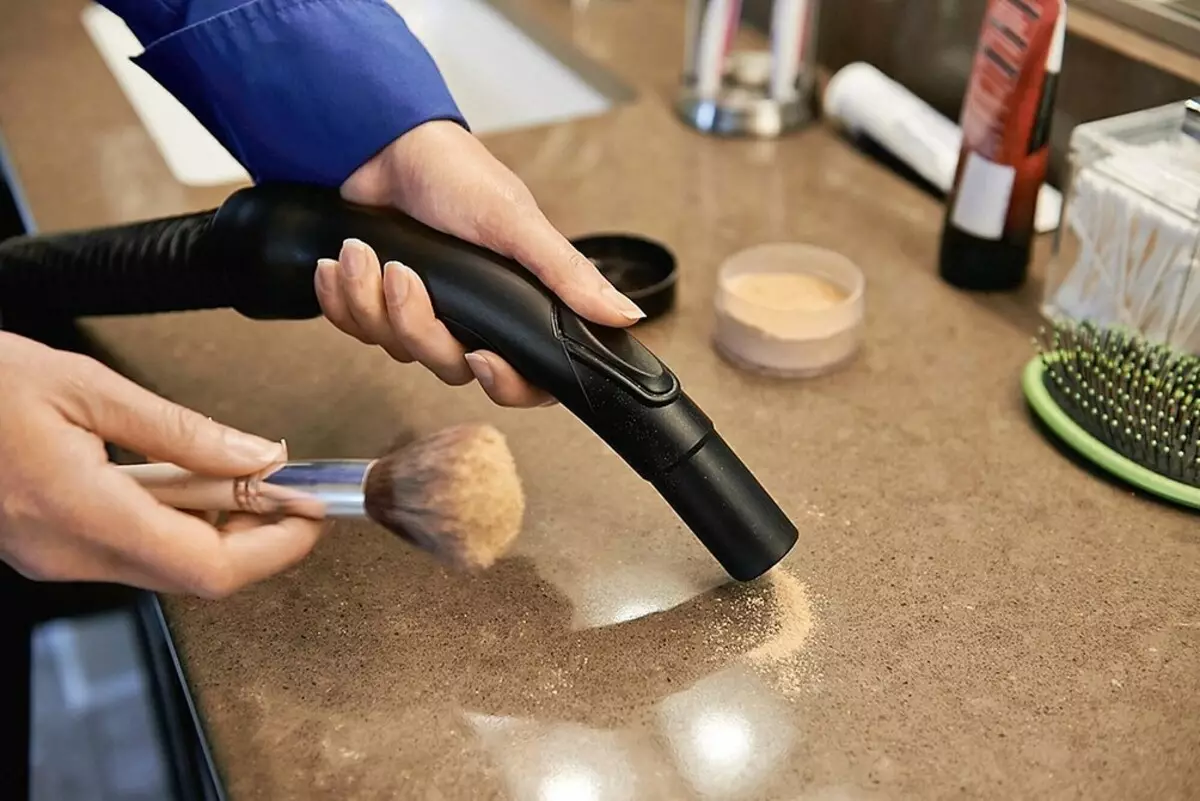Built-in vacuum cleaners help save electricity, speed up the cleaning process and even make air cleaners - tell about these and other advantages.
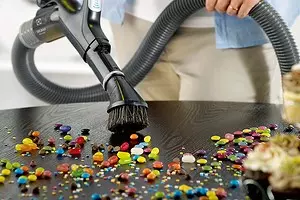
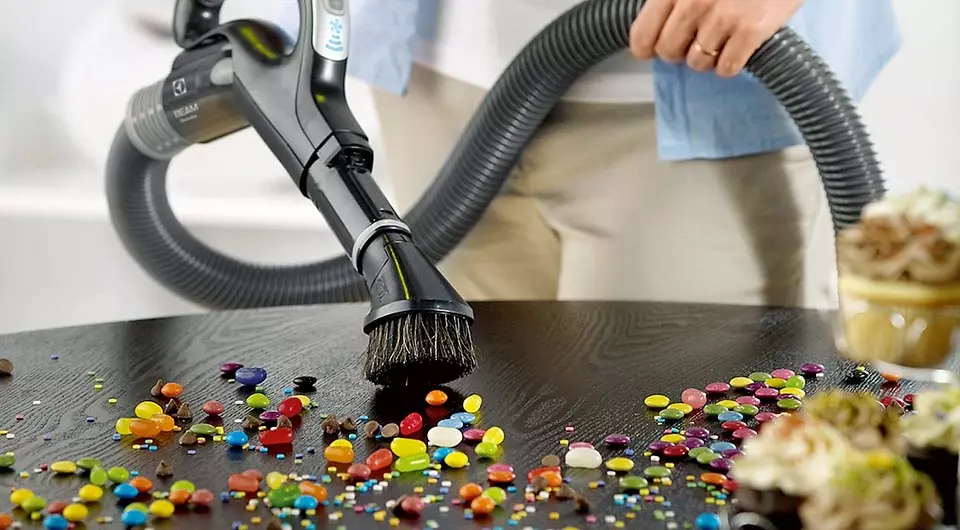
There is a way to make cleaning quickly and efficiently, in parallel by filling the house with fresh air. To do this, there is a built-in vacuum cleaner, which not only collects all the dust, but also partially replaces ventilation. We tell about this technique.
All about built-in vacuum cleaners for home
Differences of the built-in vacuum cleaner from the usualStructure
Questions and answers
- Noise in the process of cleaning
- Power consumption
- Carrying
- Life time
Installation
Differences of the built-in vacuum cleaner from the usual
Built-in vacuum cleaners appeared more than 50 years ago in North America, where the popularity of spacious cottages quickly gained popularity. Today they are widely used not only in cottages, but also in apartment buildings.
Types of built-in vacuum cleaners
- Mobile. The air is absorbed, pass it through the filter and thrown back into the room together with small inquiryed microparticles. The exhaust of any mobile device throws out fine dust back to the room where it hangs up to 8 hours.
- Built-in. The air is absorbed, passed through the filtration system and remove outside the apartment or house together with non-filtered microparticles. The device is connected to a special outlet, which through the pipeline system is connected to the power unit. Externally, this is a housing in which a filter is located, a garbage tank and a powerful engine. A exhaust pipe comes out to the street, through which the same microflu is outlined outside the house, an invisible eye.
Ordinary mobile models have a serious drawback - the exhaust air is thrown into the room where there is a cleaning. The jet coming out of the device raises small dust from the floor and furniture. And the tiny particles slip through most of the filters and climb into the air. This disadvantage even has models with a water filter, which are also emitted through the exhaust of the smallest drops of a dirty liquid.
It was possible to put an apartment at the same time without dust. It became possible only when the embedded vacuum cleaner appeared. Its essence is as follows: the garbage along with the air flow is discharged through the pipeline from the room in which there is a cleaning, in a small pantry, where the power unit is installed. It delays 94-98% of dust, and everything that could not catch with the air exhaust takes out of the house or apartment.
Pipelines are laid hidden: in the tie of the floor, in the thickness of the walls or behind the suspended ceilings. The room has only a small-wedrant neat pneumature, to which the hose is attached when cleaning, the same as the usual, only longer: from 4.5 to 18 meters.
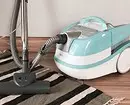
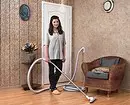
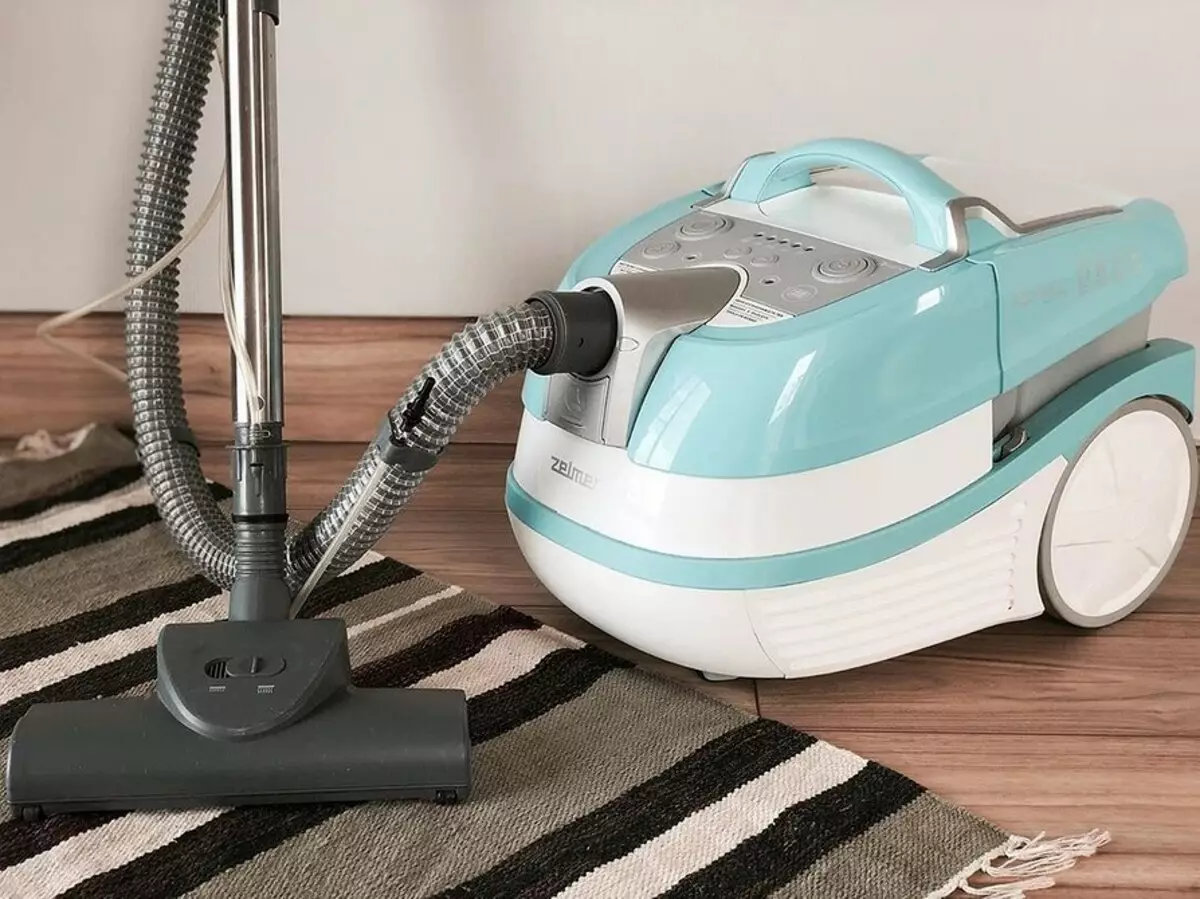
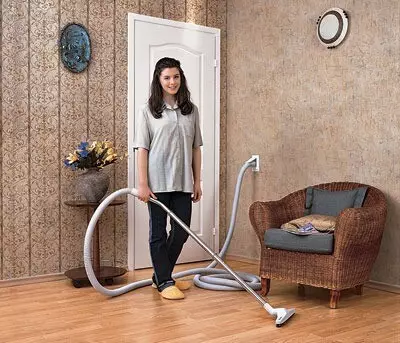
Structure
Force aggregate
It sues air together thanks to a powerful fan. Mass, dimensions and power of a stationary device are much larger than the mobile. The fan engine may be single-phase or three-phase. At the same time there are aggregates both with one and two electric motors, designed to be used simultaneously several people.
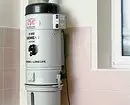
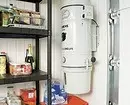
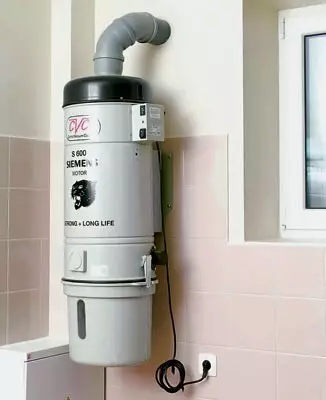
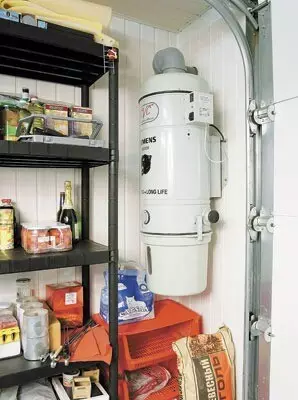
Pneummobile
It allows express cleaning without the use of the hose. Mounted at the level of the first floor in the wall or base of furniture. Used in the same way as the usual scoop - complete with a broom or brush. You sweep the garbage to the pneumatic machine, open the curtain - and the garbage is automatically absorbed.
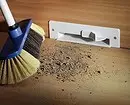

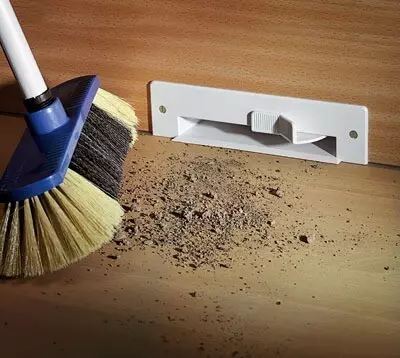
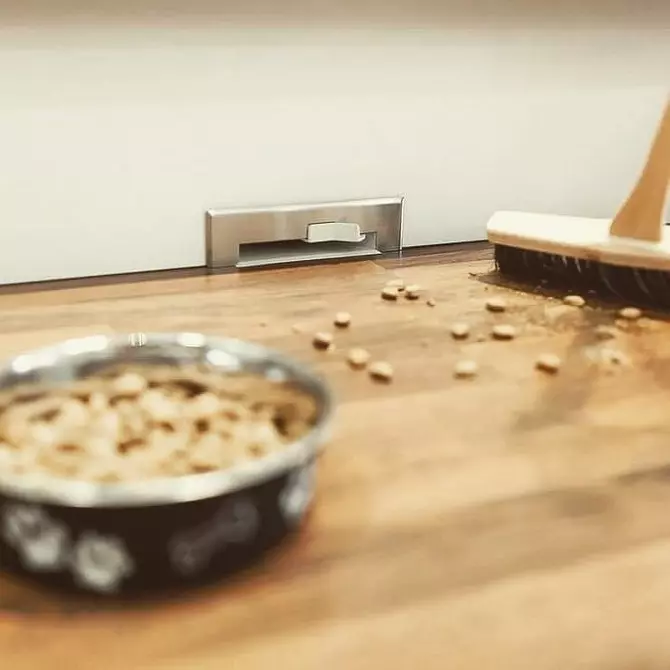
Cleaning hose
A light corrugated hose 4-15 meters long produced from a material that is not afraid of twisting and squeezing and is not susceptible to life. Its length is determined by the power of the power unit. It can be offered in several modifications: without buttons, with a power button, with a permit controller, with an engine speed regulator, as well as with a combination of these functions.
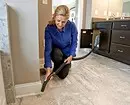

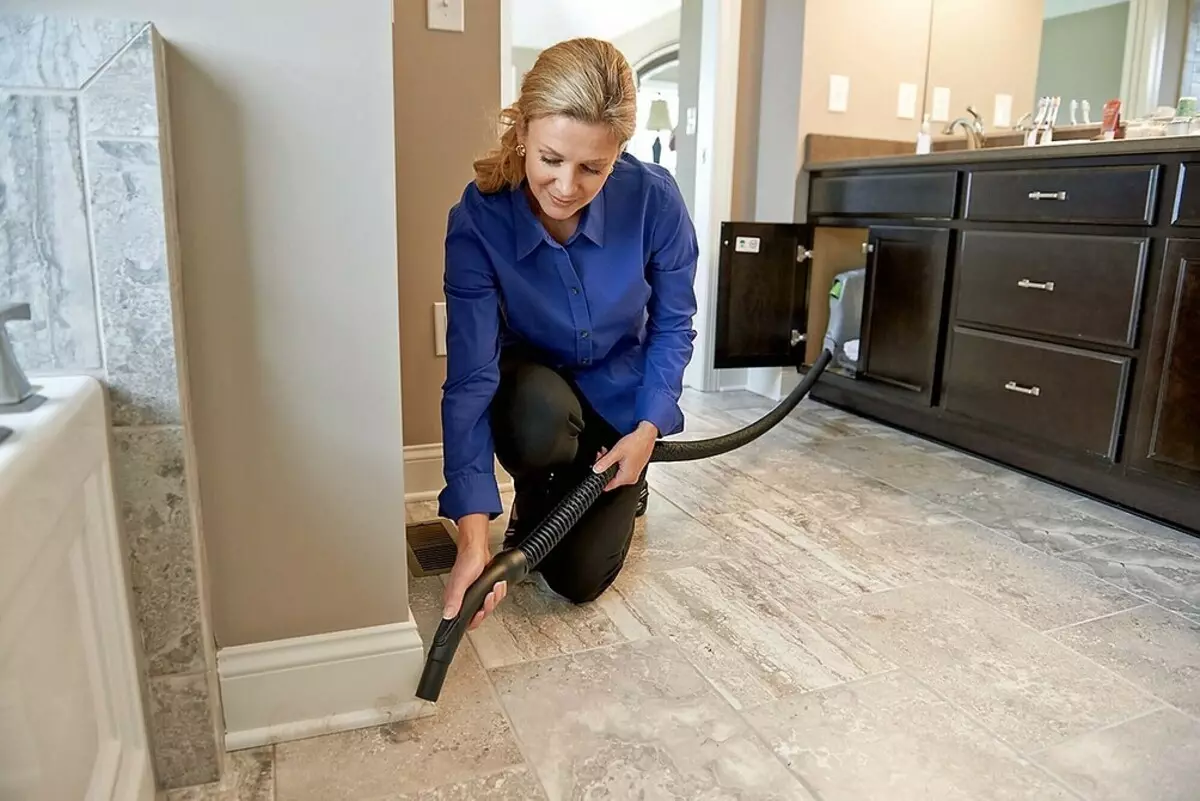
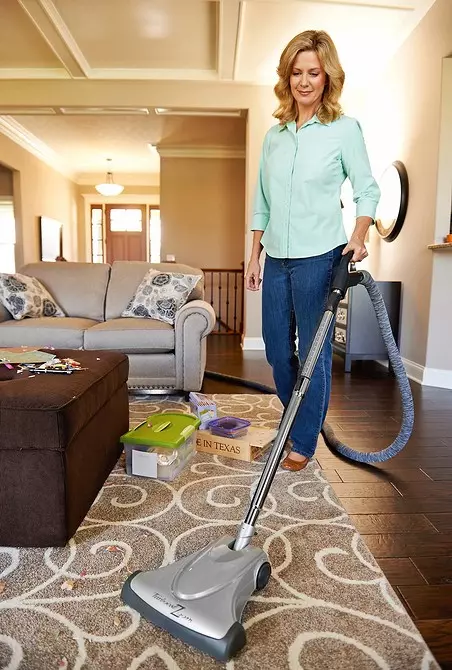
Built-in pneumocomplete for cleaning
This is a hose with a wearing system, enclosed in a compact package. There is also a telescopic tube and a universal nozzle. Pneumocomplekt is installed always near the potential cleaning site, but so as not to rush into the eyes, for example, in a locker under the sink or sink, in the built-in wardrobes, utility rooms. The system turns on automatically - it is only necessary to pull out the hose, which is automatically wound after the end of the work.Compact harvest kit
Externally resembles a wall hairdryer - a housing with a flexible hose bundled, which is stretched to 4 meters. Such a cleaning kit can be installed in a small room where you need to carry out frequent cleaning, for example, in a dressing room or garage for cleaning the car's interior.


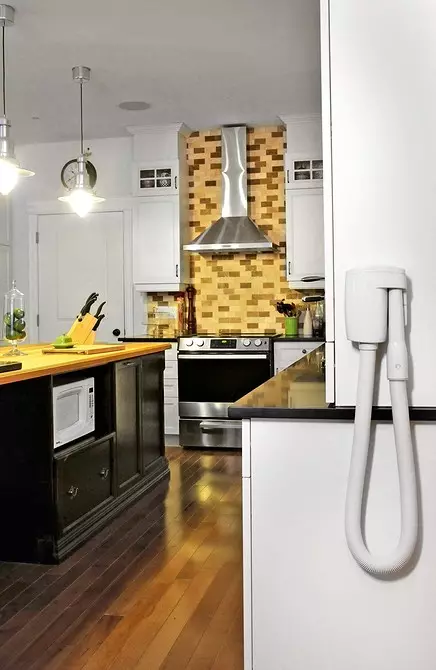
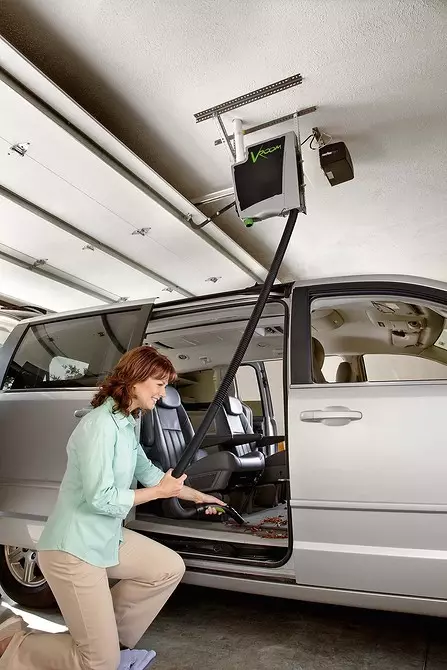
Sockets with a hidden invisible hose
Externally, such a socket is no different from ordinary pneummators. But inside the hid is hidden, which can be from 9 to 18 meters long, is inside the pipeline and, if necessary, removes from it to the desired length. And after the end of work, at the expense of suction force is tightened back into the pipeline.



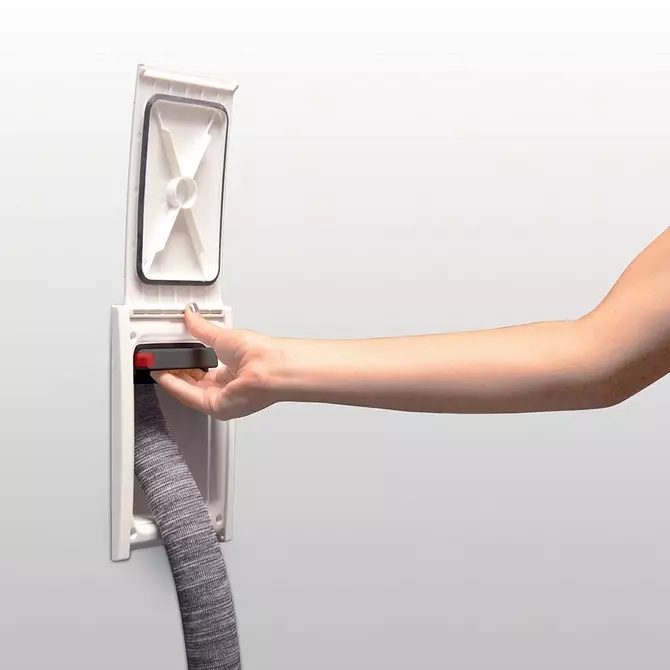
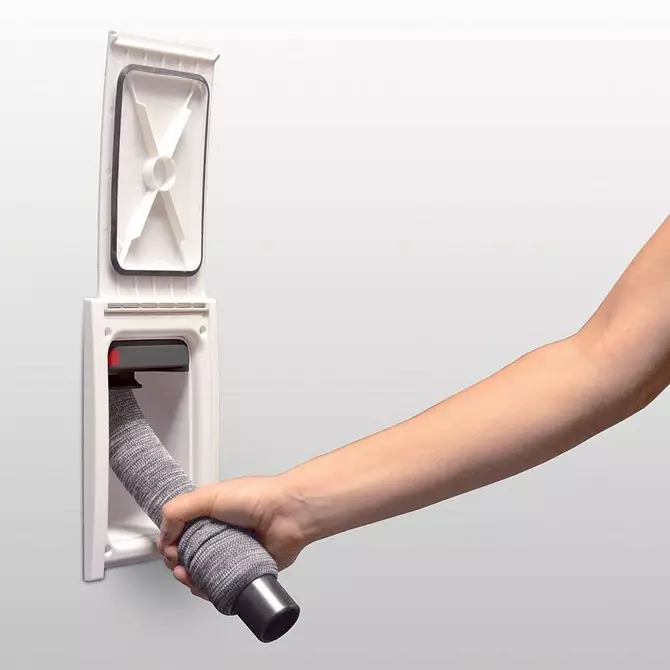
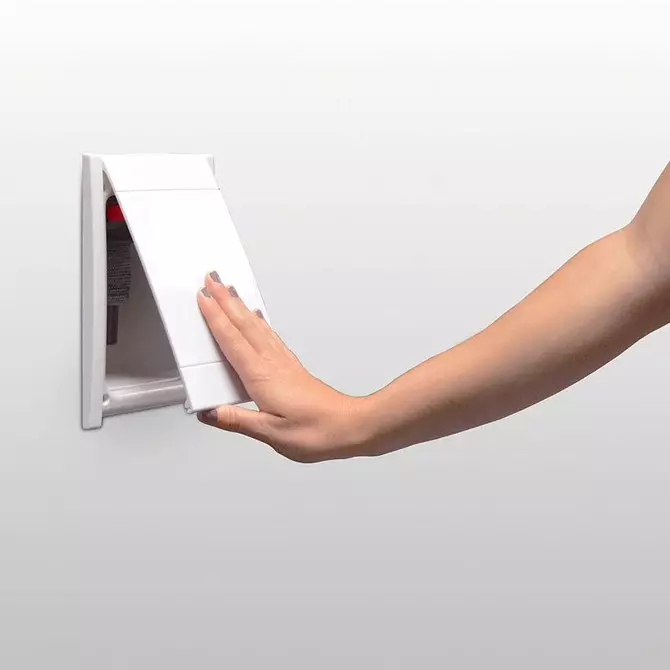
Filtration system
Most often, the built-in vacuum cleaner for the house has a cyclone system. The dirty air is dirty twisted into the spiral, as a result of which the dust particles received with it are discarded to the walls, where they lose speed and settle, and accumulating in sufficient volume, slide down - on the bottom of the garbage collector.Many manufacturers were not limited to the use of cyclones only as a filtering system and installed additional filters. For example, a tissue filter of fine cleaning captures about 3% of dust, protecting the engine from it; In the exhaust, there are only about 1% of small invisible particles. The special mechanism periodically shakes the fabric, not allowing to fully score.
Paper cartridge filter is made of paper, which is impregnated with a special composition. Dust sticks to him badly. It accumulates and falls into the garbage collector under his own severity.
The cleaning scheme may consist of a conventional paper filter packet with a capacity from 10 to 35 liters. Such a filter collects 99% of dust and only about 1% of the small one is removed with the exhaust.
Air ducts
These are plastic pipes with a diameter of 51 mm and the fittings of a variety of shape made of plastic with special additives that reduce the likelihood of the formation of a static charge. Due to this, the particles do not stick to the inner surfaces of the air ducts. The connection of parts is made in two ways: with the help of rubber seals installed in the terminals of pipes, and glue.
Control system
Along with pipelines, control cables connecting the power unit with pneummators and scoops are mounted. They are used for remote power on and off, as well as to control the air flow.The radio control scheme can also be used. This method allows you to get rid of wires and use cheaper pneummators without electrocontacts.
Output device
Purified air is sent beyond the dwelling of the dwelling pipe, connected to the output device. This is something like pneummators, but without electrocontacts and with spring-loaded lid, which opens under pressure. The output device is set at a minimum distance from the power unit.
4 questions and answers about the built-in vacuum cleaners
1. Is there noise in the process of cleaning?
The built-in vacuum cleaner is noise in the storage room, on the balcony or in the garage, and the usual - right with your back.In order for the built-in models to create as little noise as possible, each manufacturer's company cares in its own way:
- equip them with an additional silencer;
- Install double noise insulation in the case;
- make air ducts with noise absorbing;
- increase the diameter of the central exhaust to 110 mm and put the silent blocks for insulation of mechanical noise and vibration on the fastening brackets;
- Install the silencer not only at the output, but also at the entrance.
2. How much energy does it consume?
The built-in vacuum cleaner consumes electricity as an ordinary kettle - from 1 to 3 kW. At the same time it is more powerful than usual 5 times. Since the power unit is located stationary - it has more powerful engines, and therefore cleaning is more efficient.
3. How does the ventilation work?
The average power model sucks about 200 m3 of air per hour and removes it out of the apartment. Instead of remote, there is a fresh: via open windows and ventilation.4. What is the service life?
If vacuuming daily for 30 minutes, the engine resource is enough for about 30 years. It ranges from 1,800 to 2,000 hours, and in ordinary vacuum cleaners this value is about 500 hours. It is enough to replace the electric brushes of the engine in about 10-12 years, and it will continue to work.

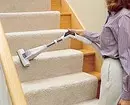
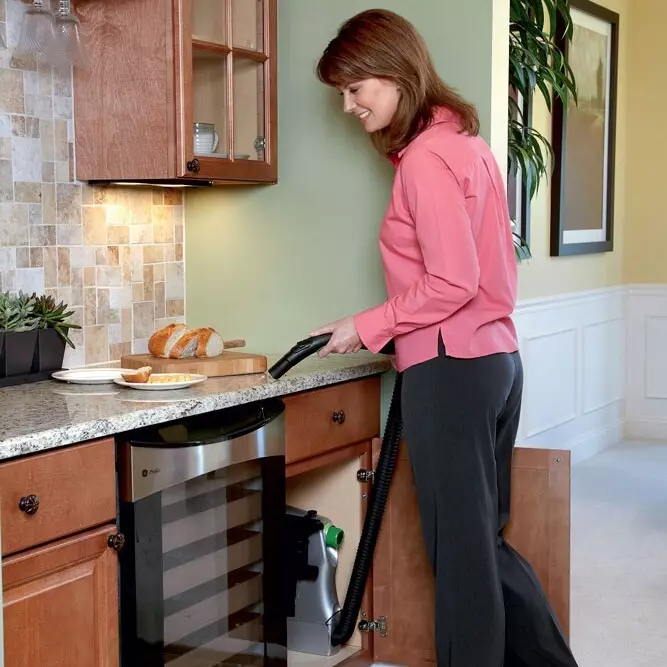
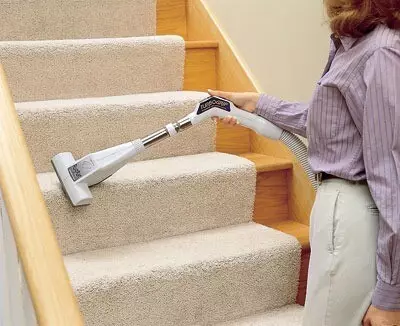
Installation
The project is being developed: there are places for outlets to cover the entire area of cleaning, places for the power unit and air ducts are selected. The entire dusting system is mounted and installed, as a rule, within 1-2 days.
The power unit is installed in any utility room: in the pantry, garage, basement, under the stairs, on the balcony or loggia. It is resistant to temperature fluctuations, so that these rooms do not need to inspit. The only limitation - it should not be under the influence of moisture. Therefore, it will have to be placed in a special cabinet, if you do not have a glazed balcony.
Plastic ducts can be paved openly: on the floor, ceiling, through the attic, a basement or a garage or in decorative boxes on the site of the plinths. There is also a variant of hidden laying: in the floor or in the stable walls, behind suspended ceilings and in raised floors.
Pneummators are housed around the house so that it is possible to remove the whole house without much effort. They are recommended to install on the interior walls of rooms and corridors next to the doorways, but not outside the door or furniture, and the foot of the stairs. When installing pneummators, it is necessary that they are on a single vertical axis with a light switch or one horizontal axis with a power supply group, and at the same time with a mandatory indentation from a group of 100-150 mm.
In any case, try to prevent the formation of "deaf" places that do not reach, there are most often bathrooms and a bathroom. In the corners of the toilet and the bathroom, dust and litter are always accumulating, which are much easier to spend pressure than to collect with a cloth during wet cleaning.
If you have a garage, it is desirable to provide a separate outlet here. For a garage for two cars, a device hanging under the ceiling will be an excellent choice. For technical premises, it is possible to provide an economical option with limited functionality without power adjustment and display.



